by David Newland
ISBN 1-903657-12-1, 224 pages, hardback
The aim of this book is to help readers discover butterflies. It has detailed descriptions and photographs of 66 good places to find butterflies. They have been chosen not only because of the butterflies there, but because they are lovely places to visit in their own right. Readers can choose where they would like to go and find out what butterflies there are to be seen and where to look. Alternatively they can select a butterfly and find when and where to look and what to look for. The places included range from well-known ones like Arnside Knott and Denbies Hillside, to less popular sites like Wiveton Down in North Norfolk and the new wild flower meadows at Gunpowder Park in Essex.
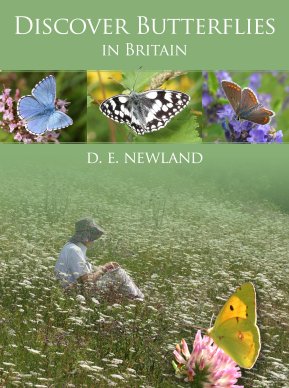 |
Although the selection is a personal one by the author, the sites have been chosen so that readers will be led to at least one hotspot for every British species. And the beautiful and interesting places which the book describes will lead not only to butterflies but to the British countryside at its best.
There are photographs and short descriptions of every butterfly separately, with historical information about dates of discovery and name changes over the years. There is also a gazetteer with an extended list of butterfly reserves, a bibliography, and a list of relevant web sites.
DISCOVER BUTTERFLIES in Britain will be published in 2006, which coincidentally is the centenary of Richard South's classic The Butterflies of the British Isles. Sadly, the Black-veined White, Large Copper, Large Tortoiseshell and Mazarine Blue, which appeared in South, are now considered extinct in Britain. The author's intention is to make readers more aware of the butterflies we have left. From this awareness, and hopefully the enjoyment it brings, he hopes to encourage work on their conservation for future generations.
As for Britain's Butterflies, WILDGuides will make a contribution to Butterfly Conservation for every book sold.
The butterflies of Britain must be one of the most-studied groups of any animal species on the planet. Indeed, the first comprehensive tome that included the subject of British butterflies, "The Aurelian" by Moses Harris, was published in 1766. Since then, many classic works have been produced, including those by Frederick Frohawk, Richard South, and Maitland Emmet & John Heath. The latest classic work would include the Millenium Atlas of Butterflies in Britain and Ireland by Jim Asher, Martin Warren, Richard Fox, Paul Harding, Gail Jeffcoate and Stephen Jeffcoate.
Given this heritage, I embarked upon this review with some trepidation - surely there is very little that could possibly be left to write that would appeal to the layman! How wrong I was. "Discover Butterflies in Britain" by David E. Newland, quite frankly, fills a gap that I didn't appreciate existed - until I read this book.
And what a wonderful book it is. With comprehensive details of 66 prime butterfly sites scattered throughout the UK, the author has done a wonderful job of leading the reader through his travels over the years. Although many of my favourite sites are covered, including such famous locations as Arnside Knott, Bentley Wood, Catfield Fen, Glasdrum Wood, Martin Down and Noar Hill, there are many sites that remain undiscovered for me. For someone who has been undertaking similar pursuits for some time, this came as a very pleasant surprise and I look forward to 2007 when I can go visit these sites!
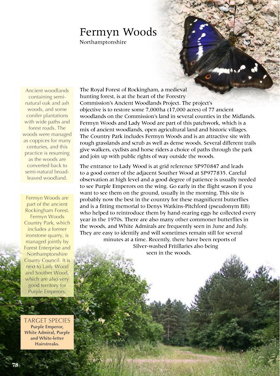 | 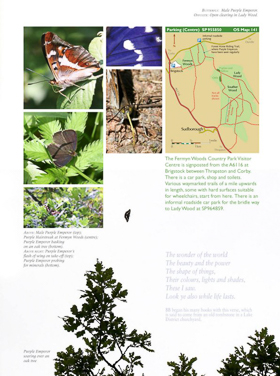 |
Each site is described in detail, and not just from the perspective of the butterflies to be found there; in most cases, the author touches on the history of each site (providing fascinating insights into the origins of the site), its geology, and the flora to be found. The descriptions are augmented with the author's own photos from each site. And, of course, the site itself is described in sufficient detail to find the target species - down to the nearest path or tree in some cases! A map of each site is also included, together with an extensive list of the species to be found at each site. Each site has 2 pages dedicated to it. A nice touch to the sites pages are a number of poems, written by the author's wife, Tricia.
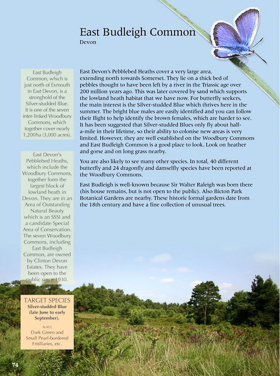 | 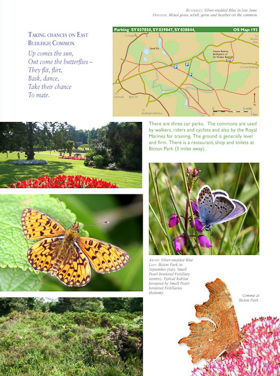 |
In addition to the site information, the book also includes a one-page summary of each species, and provides a nice link back to the sites where each species can be seen. The species descriptions are sprinkled with the author's own observations which bring a potentially lacklustre offering to life! Again, all of the photos are the author's own.
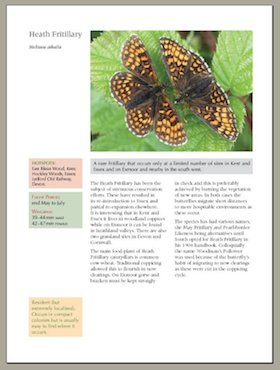 |
The book concludes with links to other information sources, including book references and website addresses.
This is a high-quality book in terms of content, layout and final product. At 224 pages I'm absolutely astounded, when compared with other works of a similar quality, that it is only retailing at £19.95. Furthermore, a donation will be made to the Butterfly Conservation charity for every book sold.
In summary, I can't recommend this book highly enough. It fills a gap, is value-for-money, and rightly deserves a place on my bookshelf alongside the likes of Frohawk and South.
A website, dedicated to this book, can be found at www.discoverbutterflies.com.
Click here to order the book directly from Princeton University Press.